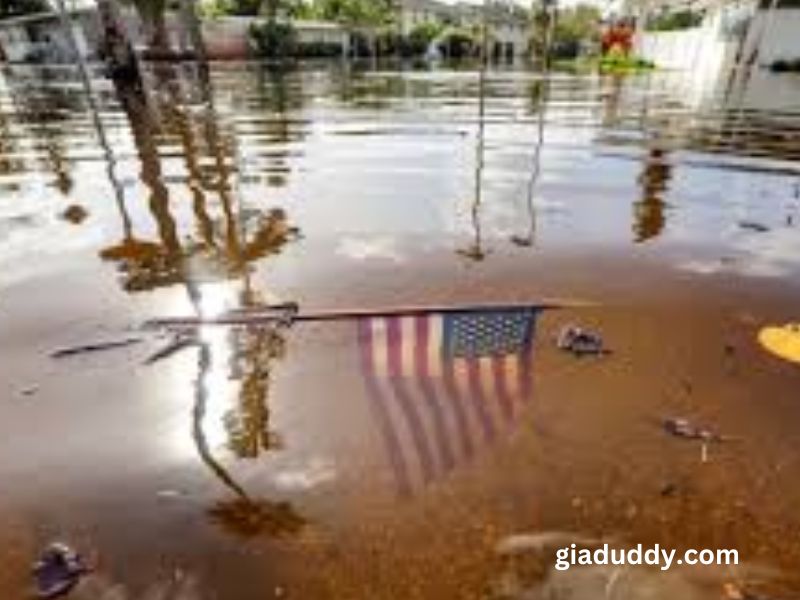Flooding is a recurring natural disaster that affects many regions worldwide, and the Northern region of Florida is no exception. Inundaciones en el norte de Florida (floods in Northern Florida) can cause significant damage to both the environment and the local communities. Understanding the causes of these floods, their impact, and preventive measures is crucial to mitigating their devastating effects. This article explores the recurring flooding issues in Northern Florida, detailing the impact on homes, infrastructure, and agriculture, while discussing the efforts to manage flood risk in this region.
Overview of Flooding in Northern Florida
Inundaciones en el norte de Florida are often caused by heavy rainfall, hurricanes, and tropical storms, which can overwhelm the drainage systems and flood vast areas. The region’s climate, which is characterized by high humidity and frequent rainstorms, makes it particularly susceptible to floods. The geography of the area, including low-lying coastal zones and river floodplains, exacerbates the risk of flooding, particularly during the hurricane season.
Main Causes of Flooding in Northern Florida
The primary causes of flooding in Northern Florida include the following:
- Heavy Rainfall: During the wet season, which spans from May to October, Northern Florida experiences frequent thunderstorms and tropical storms. These events can produce excessive rainfall that causes rivers and streams to overflow, leading to widespread flooding.
- Hurricanes and Tropical Storms: Northern Florida is prone to hurricanes, particularly during the peak of the Atlantic hurricane season from August to September. These storms bring heavy rains, strong winds, and storm surges, all of which contribute to flooding in coastal and inland areas.
- River Overflow: The region is home to several large rivers, such as the St. Johns River, which can overflow during periods of heavy rain. This overflow can inundate nearby towns and cities, leading to significant property damage.
- Storm Surges: Coastal areas in Northern Florida are especially vulnerable to storm surges, which occur when rising ocean water is pushed onto the shore during hurricanes and tropical storms. The water can flood low-lying areas and cause severe damage to infrastructure.
Impact of Flooding on Northern Florida
Inundaciones en el norte de Florida can have a profound impact on both the environment and the local economy. Some of the major effects include:
- Property Damage: Flooding can destroy homes, businesses, and public buildings. Many properties in flood-prone areas are not built to withstand the intense forces of floodwaters, leading to structural damage and, in some cases, complete destruction.
- Displacement of Residents: As floodwaters rise, residents may be forced to evacuate their homes. This can lead to displacement, with families seeking shelter in temporary accommodations. The emotional and financial toll of losing a home is devastating for many people.
- Agricultural Losses: Northern Florida is an important agricultural region, with crops such as tomatoes, peanuts, and citrus being major contributors to the local economy. Flooding can destroy these crops, leading to substantial financial losses for farmers and disruptions in the food supply chain.
- Ecosystem Damage: Flooding can alter natural habitats and lead to the destruction of wetlands, forests, and wildlife. The overflow of water can wash away plant life, degrade water quality, and harm local wildlife, affecting biodiversity in the region.
- Infrastructure Damage: Roads, bridges, and utilities are often damaged or destroyed by floodwaters. This leads to disruptions in transportation, communication, and power supply, complicating recovery efforts and increasing the cost of flood damage.
Flooding Events in Northern Florida: A History of Impact
Northern Florida has experienced several major flooding events in recent history. One of the most notable was the 1999 flooding caused by Hurricane Floyd, which brought massive amounts of rain and led to widespread damage in cities such as Jacksonville and Tallahassee. More recently, Hurricane Irma in 2017 caused severe flooding, particularly in coastal communities, and left many residents with long-term recovery challenges.
The frequency of hurricanes and tropical storms has only increased in recent years, making it crucial to understand the risks of inundaciones en el norte de Florida. As climate change continues to influence weather patterns, it is expected that the region will experience more frequent and intense storms, leading to higher flood risks.
Preparing for Flooding: Measures and Strategies
While flooding is an inevitable part of life in Northern Florida, there are numerous strategies and measures that can help minimize its impact. Some of the most effective ways to prepare for and respond to flooding include:
Improving Drainage Systems
One of the primary ways to reduce flooding in Northern Florida is by improving the drainage infrastructure. Many cities in the region have outdated drainage systems that cannot handle the volume of water produced by heavy rainfalls. Investing in modern stormwater management systems, including retention ponds, culverts, and expanded sewer systems, is crucial to preventing urban flooding.
Building Flood-Resilient Infrastructure
Building homes and businesses in flood-prone areas requires consideration of flood risks. Elevating buildings, installing flood-resistant materials, and implementing floodproofing measures can reduce the damage caused by rising water levels. Coastal properties can be equipped with seawalls or levees to protect them from storm surges.
Floodplain Mapping and Zoning
Inundaciones en el norte de Florida can be managed more effectively through floodplain mapping and zoning regulations. By identifying areas most at risk of flooding, local authorities can implement zoning laws that restrict construction in flood-prone areas. This helps to prevent the development of properties in high-risk zones and reduces the number of structures that are vulnerable to flooding.
Public Awareness and Education
Raising awareness about flood risks and providing educational resources to residents are vital components of flood management. Public awareness campaigns can help people understand how to prepare for floods, such as creating emergency kits, developing evacuation plans, and securing their properties. Communities can also hold regular training sessions on flood preparedness, ensuring that citizens are equipped to respond to flooding events.
Government Response and Resources
The government plays a crucial role in flood management and response. Federal and state agencies, such as FEMA (Federal Emergency Management Agency), provide financial assistance, resources, and disaster recovery programs to communities affected by flooding. Local governments also need to have emergency plans in place for evacuations, sheltering, and restoring critical infrastructure after a flood event.
Climate Change Mitigation
With the increasing frequency of extreme weather events, addressing climate change is essential to mitigating flooding risks in Northern Florida. Efforts to reduce carbon emissions and protect natural habitats, such as wetlands and forests, can help manage the impacts of flooding. Additionally, improving the resilience of coastal communities through better land use and infrastructure design can make a significant difference in reducing vulnerability to flooding.
The Role of Technology in Flood Prediction and Management
Advancements in technology play an important role in predicting and managing flooding events. In Northern Florida, meteorological technology, such as weather radar and satellite imagery, allows scientists to track storm patterns and predict heavy rainfall. Early warning systems can alert residents about potential flooding, giving them enough time to prepare and evacuate if necessary.
Moreover, geographic information systems (GIS) and flood modeling software can help authorities predict flood levels, analyze risk zones, and make data-driven decisions on flood management. By integrating real-time data into flood risk assessments, authorities can take more targeted actions to protect at-risk communities.
Conclusion: The Path Forward for Northern Florida
Inundaciones en el norte de Florida are a pressing issue, but through a combination of improved infrastructure, public education, effective zoning laws, and advanced technology, the region can better prepare for and manage flooding risks. As climate change continues to impact weather patterns, it is crucial to focus on sustainable and resilient solutions to protect both the environment and the people of Northern Florida. By investing in flood mitigation efforts, residents can ensure that future flooding events have a reduced impact on their lives, homes, and businesses.
In summary, while flooding remains a significant threat in Northern Florida, proactive measures and continued awareness can help reduce the devastation caused by these natural disasters. Through effective flood management strategies, the region can face the challenges of rising water levels head-on and work toward a safer and more resilient future.


